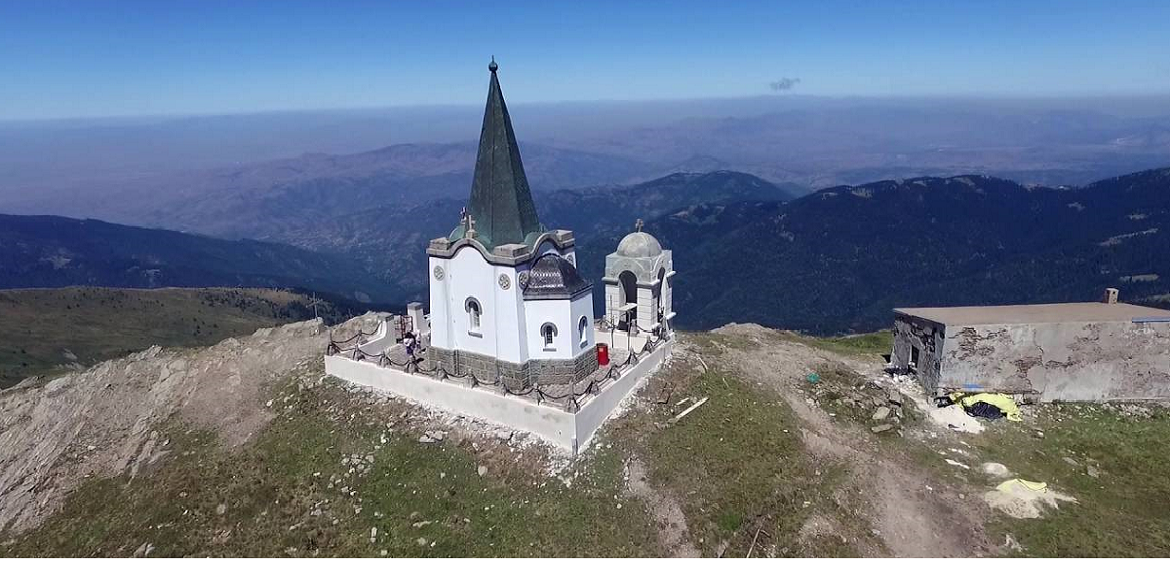Salonika Frontline was formed in 1915 following the Allied Powers’ attempt to come to the aid of Serbia. This tour leads to Mt.Kajmakcalan in Greece and regional capital Thessaloniki, the city of Serbian “Iron Platoon” and the legendary war capital, before returning to Serbia via Macedonia.
Day 1
Departure from Belgrade in later afternoon hours.
Day 2
Arrival in Greece in the early morning hours. Then we are going to a place Polikastro near the Greek Macedonian border where we will visit the monument to Nikola Pasic, visit the cemetery where the British soldiers that were killed in the war are buried and visit a monument on a hill on which soldiers from Britain, Italy, France, Serbia, and Greece gave their lives.
Upon arrival in Thessaloniki hotel accommodation and after that going sightseeing we will visit the cemetery in Zejtinlik. We hope that we will be here to welcome the aged and the legendary mister Djordje Mihajlovic, a cemetery caretaker in Zeitinlik, a descendant of Thessaloniki fighter himself.
Upon returning to the city we have a walking tour through the streets of Thessaloniki and discovering interesting and hidden places in the city. We’ll find small local markets and neighborhoods where local craftsmen still produce jewelry, leather, copper and bronze products traditionally. You’ll be surprised how much interest in the past jobs is still kept in a fascinating city.
Our tour in Thessaloniki finishes in the part of the town that was once known for its oil trade and oil and today is a place where you will find some of the city’s best cafes, bars, and restaurants. For those who are hungry, it will be the perfect place for a longer stay and meeting with the rhythm of the city, and for those who are eager to go shopping here you can also go to the famous Thessalonica store. (For those who want a great bargain, we will show a part of the city which is near where the Chinese stores are stationed). Free time and overnight stay.
Day 3
Departure from the hotel at 8.30 am. Journey to Edessa, a city that was founded by Emperor Dusan! Arrival through the path that was partially built by Serbian soldiers during their recovery and preparation for battle on Kajmakcalan. A short walk through the city to visit the church which was built in the reign of Emperor Dusan, which has a strange combination of Byzantine fresco paintings and columns of the pre-Christian period, to visit the houses in which king Petar spent time, the story of three Serbian hospitals that were located here and a visiting of nearby waterfalls, the trademark of the city.
Taking pictures in front of and behind the waterfall, and then continuing the journey to the mountain Nidza, the third largest Greek mountain with its peak Kajmakcalan at 2524 m. altitude, the place of the breakthrough of the Salonika front during World War II. Now that is the most famous Greek ski center. Macedonian border runs along the Greek border very top and this is also the fifth highest peak in Macedonia. We are going to the ski center and then a walk to the elevation of 2524 m, which we will reach in about an hour and a half walk. We believe that many feel as holy walkway when they come to the church of St. Ilija, which was built of cement and bones of our heroes who died here in hand to hand combat with enemies from September to November 1916 and landed in the grave which holds the bones collected on this site
Slow return to the bus, and then going to the tourist place Stari Athanasiou where we will have free time for lunch and a break.
We continue traveling to Macedonia and then going to the village Skocivir located at the foot of Kajmackalana. Thanks to the action of the Association of War Volunteers 1912 – 1918, their descendants and admirers and mountaineering ski association Kopaonik from Belgrade, who in addition to their other activities and work on the preservation of Serbian holy sites in Macedonia, in the autumn of 2011 they cleaned 2 cemeteries in the village as well as two more in the village Dobroveni. Before them, none of these places were visited from Serbia since 1918 nor were cemeteries maintained! In this place, there are buried about 500 Serbian troops. In their telling, this is just one of the 44 Serbian military cemeteries in the area of Bitola.
Continuation of the journey takes us to Bitolj, the first town that was liberated by the Serbian army after the breakthrough of the Salonika front and Albanian Golgotha, and the second-largest city in Macedonia. A short tour of the city and a visit to the Serbian cemetery. A short walk through Siroki Sokak or Bitolski Korzo as it is called, which is the true heart of the city. Here lay the oldest works of architecture and buildings in the Balkans, which adorn the city since the Ottoman period…
We will use the opportunity to visit the archaeological site Heralkeu Lyncestis, an ancient city with its famous mosaics which is named after the Greek mythological hero Heracles. Although much older, the Roman Emperor Hadrian gives a significant stamp, when in the early 4th century Christianity began, Heraclea was an important episcopal center. In the first half of the 4th century, the city was built for Philip II of Macedonian.
The journey continues to Skopje, with hotel accommodation. After that a walk through the city and free time.
Day 4
Sightseeing tour of Skoplje.
On the way to Prokuplje, you will hear exciting stories of the heroines of the war: Milunka Savic, Florin Sundance, and other women and their role in the war. After that, we continue to the Serbian Macedonian border. We arrive in Prokuplje at about 12 h. Then you will be introduced to the history of the famous Gvozdeni Regiment from this place. Here you’ll find out why the infantry regiment “Knez Mihajlo” was hailed “Gvozdeni regiment” during the Balkan wars, and we will recall their participation in the Battle of Cer and its third commander, Colonel Milivoje Stojanovic which the composer Stanislav Binički dedicated the composition “The March on the Drina”. We’ll see the flag of the Regiment in the museum, which is a highly-decorated flag of the Serbian Army and special honor was given to her by being buried with the casket with the remains of king Petar. Then a visit to the museum and the monument to fallen soldiers in the city center.
Prokuplje is a city of the heroes of Kosovo, more specifically Jug Bogdan’s city (father in law of Duke Lazar, father of the Duchess Milica and nine Jugović’s). From here Lazar’s godfather Milan Toplica for who the whole district and the river that flows through here bear the name.
Jug Bogdan’s church, built on the foundations of the temple dedicated to Hercules, in the 16th and 17th centuries it was used by the merchants of Dubrovnik colonists who settled here because at the time, Prokuplje was an important crossroad of important routes (Dubrovnik – Istanbul). We will take a break at the Hisar hill, which offers a beautiful view of the city and here we take the opportunity to visit the ruins of the Roman city Hameum. Today is a significant ceremony being held here.
On the road to Nis will visit the archaeological site of Plocnik which has lately been writing more about because of significant discoveries (the last one is a ring that is 7,000 years old). This site finds its place among the archaeological sites of Europe and the world finds it as the cradle of European metallurgy of copper. It is a period of earlier phases of the Vinca culture. Arrival in Nis in the afternoon. On July 25th, Niš became the seat of the Serbian government – war capital. Here the National Assembly and other political and administrative bodies of the Kingdom, diplomatic and military representatives from allied and neutral countries, correspondents of foreign newspapers and others were moved from Belgrade. The following day Austria-Hungary declared war on Serbia, which is the beginning of the First World War. From 1915 to 1918, Nis was under German and Bulgarian occupation. During the war, he was visited by the German Emperor Wilhelm II. Visiting the museum.
Dinner at a restaurant. After dinner, departure for Belgrade.
Arrival after midnight. For all travelers of this program free walking tour is provided with the theme Belgrade in the First World War. After the tour, the tourists can have dinner together, evoke memories of the trip, exchange photos and do similar things.
PRICE: 195 EUR per person
Price includes:
Transfer according to the program
Professional, licensed guide during the tour
Two overnights in 3* hotel, based on BB
Costs of organization
Price does not include:
Other costs not mentioned in the program






Get Social